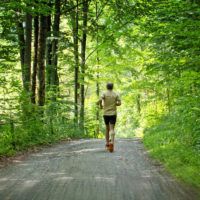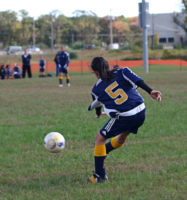Surviving Your Sport: Keeping Yourself Together When You Play Hard
If you’re reading this, you’re already aware that moving your body is one of the most important things you can do to maintain your own good health. Activities promoting strength and mobility will keep you moving well into old age. Activities that challenge your heart, lungs and large muscle groups will keep your cardiovascular system working well, which provides a strong foundation for overall health. And most of all – physical activity is FUN! Studies show that it can be a huge help in supporting both mental and emotional health. You’ve felt this, I’m sure. But now I’ll ask another question… what does it COST you to move? Let’s talk about surviving your sport, and keeping yourself together when you play hard.

Do you ever wake up with sore hips or knees after a long run? After a hard, fast hockey game,is your back a little stiff, maybe a little “twitchy?” After particularly freeing yoga class, does your sacro-iliac joint feel unstable, or your head feel heavy? If you’ve ever experienced any of these, then you know that there is a dark side to physical activity. Despite all the wonderful things that physical activity will do for you, there may be things you have to “endure” to stay active. Every time you challenge your body, the tissues have to adapt to new stresses and new information. Sometimes that happens smoothly and easily, and sometimes it doesn’t. When you frequently play a sport you love, you may create repetitive stress patterns in the body. If those patterns aren’t balanced out in the rest of your moving life, that repetitive stress can lead to compensatory patterning that can cause movement inefficiencies and joint imbalances. You may not notice these at first. But if you notice that your aches and pains are accumulating – it’s probably not just age catching up with you. It’s more likely that dysfunction is finding it’s way into your movement. But here’s the good news…
YOU DON’T HAVE TO SUFFER! There are lots of things you can do about it.
Some of the best self-care tools I ever learned came from the world of dance. Dance can be a grueling profession, and dancers are continually looking for ways to keep their bodies strong in the fullest possible range of motion. Walk into any professional dance class, and 45 minutes to an hour before class starts, you’ll find the studio littered with dancers each doing their own personal, morning movement ritual before class. Mostly they’re each sorting out what their individual bodies need most to prepare for the demands of class that morning. Even though all of them will attend the same class, working on the same technical skills, each of them will have a personalized approach for what his/her body needs most. For some, that will mean releasing stiff joints. For others, making sure their core is well integrated. For some it’s about making sure that they’ve engaged appropriate support for a unique spinal curve or hyper-mobile joint. It’s typically a slow, quiet and introspective process, but by the time class is ready to start, you can feel the energy in the room change as dancers are really READY to take on the day. And each dancer has his/her own personal ritual for how to take care of the body AFTER class, rehearsals or performances too.
Why is this a good thing? Well, most people will admit that what is good for a given sport or activity is not always good for the body. (I lived for years with my legs in external rotation – great for dance, but for walking? Not so much.) Careful attention to good technical form in your chosen discipline is important. But equally important is looking at how your own body processes and deals with that technique, during your sport and in the rest of your moving life. Taking the time to understand the nuances of your own body relative to the demands of your activity can mean the difference between effortless technique and great performance, or effortful execution, potential dysfunction and pain. Especially when you choose to up the ante in terms of demand! Going from a 1/2 marathon to a full marathon is about a lot more than just endurance.
Getting to know your own issues and figuring out how to manage them while you’re working at intensity can be a challenge – but with the right approach, it’s totally doable. A commitment to appropriate personal preparation and after-care can help you survive whatever your sport or physical activity throws at you. I can’t guarantee you will never be sore; if you’re pushing boundaries, a little pain is part of the package. But this approach sure will help to keep you going day after day!
Here’s the formula:
A. OBSERVATION
1. Understand the physical demands of your sport
- Rock climbing is different from hockey is different from ballet is different from weight training. As you go deeper into your favourite sport, make sure you understand the particular load demands of the activity you’re engaged in.
- What are the repetitive movements involved in your sport? Are they loaded, or unloaded movements? Are those movements repeated anywhere else in your life?
- What are the forces acting on your body: rotation, velocity, load, gravity, direction?
- What are typical issues and injuries sustained by others who participate in your type of activity?
- If yours is a contact sport, notice how your body deals with that contact – what braces, what embraces, and what gives way? Are you repelling contact, absorbing it or allowing it to move through you?
- If you’re dealing with lifting weight or moving a load around, what part of you is really absorbing the load?
2. Understand the way your own body responds to the demands of the sport
- If you’re working with a coach or a teacher, listen to the cues you are given as you work. Where is your coach encouraging you to move from? Is your body initiating from that place?
- How do you stabilize your body during particularly difficult actions, or when your stamina is challenged?
- Feel where you experience struggle in your body. Sometimes, finding your way out of struggle is more about letting go than about throwing more muscle at it. Find ways to work smarter.
- How does your body handle the load? How do you manage rotation, gravity, changes of direction, change of load, velocity?
- What signals do you get that you are approaching system overload? How do you know when you are DONE?
- What happens in your body for a day or two afterward? Are there any parts of you that feel particularly tight, short, loose… different?
- How do your joints move afterward? Anything feel particularly stiff or sore? Does anything feel MORE stiff or sore, the more you do?
- Observe your sensations, your experiences and your recovery. Notice any patterns that may reveal themselves.
3. Acknowledge your body’s own pecadillos and your current “limitations”
- None of us like to acknowledge imperfection or limitation. But get real. We all have them. Understand that what is hard for you now is really just something that needs better support. If you can look objectively at your “limitations,” which are often transient, you’ll find it easier to figure out how to work with them, around them and through them to find the support you need to move beyond them. But you can’t ignore them or blow past them. They will come back to bite you.
- Does that “bum knee” make it hard to lunge deeply? Find out how to lighten the load on the joint by exploring better core control, learning how to free the legs from the pelvis, or learning how to open your feet into the floor to create better access to the back of the leg for added support. Maybe you’ll need some added education about how to work through your current limitations. But if it gets you moving better… why not?
B. ACTION
1. Before
- This is the stuff that happens BEFORE practice, or before the game. Not while you’re working out with the team – but on your own. This is about preparing your body to deal with whatever is likely to come at you – in training, during a race, or during your movement practice.
- The key to great preparation is creating the closest thing possible to neutral structure in your body. How? Releasing joints to enable the best possible balance for efficient muscle recruitment. Free the spine and support its entire length. Engage and integrate your core. Your training will be that much more effective on a neutral platform (i.e.: the neutral structure you create).
- Take what you observed about the demands of your sport, and your body’s specific and individual needs, and take the time to open, stretch, support, engage, access and integrate whatever you need to. (For example, in my body right now, my left bicep is creating some faulty load transfer issues. Part of my warm-up, and my recovery work, is making sure that the bicep is released and that my elbow is moving freely. Believe it or not – that gives me better function in my hips! You won’t find that in ANY prescribed warm-ups for any sport! But right now, that helps my performance more than anything else I’m doing.)
- If you don’t know or can’t find specific things that need support, then just create as much ease and freedom and springy support in your body as you can. A student of mine once described the sensation as feeling “buff but loose.” Go for that.
2. During
- Throw yourself into your activity – whole heart, head and body. Observe your sensations while you do. What’s working? What’s not?
- If something isn’t working the way you want it to – is there another way to approach it? Maybe going harder is the answer. If not, maybe channeling your effort in a different way is the key.
- Have fun!
3. After
- A cool-down is important – but it’s not just about muscles and heart rate. Do the cool-down and stretches you like, and then…
- Take what you know about how your body deals with the demands of your sport – and “un-do” any potential issues. After a strenuous hike – you may need to stretch your thighs and butt, but you may also need to release the hip joint and re-assert deep lumbar support. If you tend to overwork your global muscles, maybe it’s about renewing access to the deep core. Maybe releasing your butt, and dissociating your sitz bones from your tailbone can help take tension off the knees. Maybe it’s simply taking the time to breathe well. Feel it in your body. When you find the right stuff, your body will quite literally sigh in relief.
- Create a post-activity ritual to look after the parts of you that you know need support. After the game, without fail, DO it.
- Go hard, but make sure you re-establish freedom of movement in all your joints. When things begin to feel restricted – don’t ignore them. Play around until you find a way to get things moving again. Or get help.
- The recipe will be yours and yours alone. Most of it you can likely figure out on your own over time. But if you’re feeling lost, a good movement professional can help you sort out your best course of action.
That’s it: my secret formula for surviving your sport. It’s worked for me for years. It takes time, and yes, it takes some mental energy. You may not need or want to take 45 minutes. For you it might be 10 minutes, or 5. But take the time. It’s the physical equivalent of mindfulness. By working this way, you are developing an embodied awareness that will help you through your day-to-day activities, the most intense sports, and even the most traumatic of injuries. You may need some help at first, figuring out where your body can most benefit from the extra attention. But even if you just start playing with some of this on your own, I guarantee that you will find a new kind of ease in your body before, during and after your activities. You won’t take nearly as long to recover, and you may just find untapped resources within you that can propel you to personal bests.
Give it a whirl – what can it hurt? Enjoy yourself, look after yourself, and keep on playing! If you’d like to explore how Pilates exercise can help prevent injuries, check out Moving Spirit’s Getting Started Guide for more information, or book an Introductory Private Training Package today.
About Susannah Steers
 Susannah is a Pilates and Integrated Movement Specialist, and owner of Moving Spirit. Through movement teaching, speaking and facilitating workshops, she supports people in building fitness from the inside out. Susannah co-hosts The Small Conversations for a Better World Podcast; an interview-style podcast engaging in conversations about health that can spark positive change in individuals, families, communities and around the world.
Susannah is a Pilates and Integrated Movement Specialist, and owner of Moving Spirit. Through movement teaching, speaking and facilitating workshops, she supports people in building fitness from the inside out. Susannah co-hosts The Small Conversations for a Better World Podcast; an interview-style podcast engaging in conversations about health that can spark positive change in individuals, families, communities and around the world.
If you liked this article, you might also enjoy:
The Athlete’s Conundrum: When Structure Affects Performance
